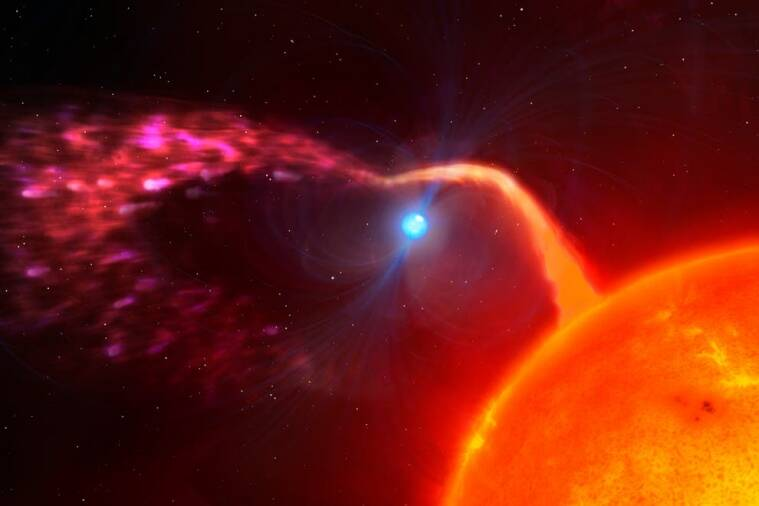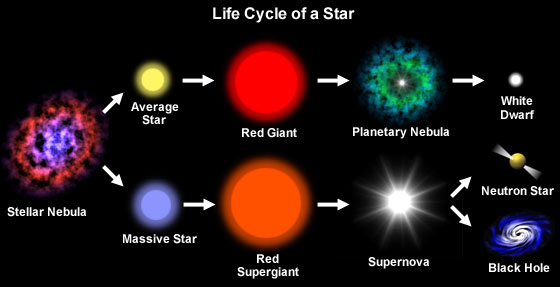Science & Technology
Fastest Spinning White Dwarf: J0240+1952
- 24 Nov 2021
- 3 min read
Why in News
Recently, a team of astronomers has confirmed the fastest spinning white dwarf (named J0240+1952) that completes a full rotation once every 25 seconds.
Key Points
- About:

- It is part of a binary star system; under the influence of the magnetic propeller system, its immense gravity is pulling material from its larger companion star in the form of plasma.
- Under the magnetic propeller system, the white dwarf attracts plasma from the binary star system. However, the magnetic field of white dwarf acts as a protective barrier, causing most of the falling plasma to be propelled away from the white dwarf.
- White Dwarf:
- White dwarfs are stars that have burned up all of the hydrogen they once used as nuclear fuel.
- Such stars have very high density.
- A typical white dwarf is half the size of our Sun and has a surface gravity 100,000 times that of Earth.
- Stars like our sun fuse hydrogen in their cores into helium through nuclear fusion reactions.
- Fusion in a star's core produces heat and outward pressure (they bloat up as enormous red giants), but this pressure is kept in balance by the inward push of gravity generated by a star's mass.
- When the hydrogen, used as fuel, vanishes and fusion slows, gravity causes the star to collapse in on itself into white dwarfs.
- Black Dwarf: Eventually—over tens or even hundreds of billions of years—a white dwarf cools until it becomes a black dwarf, which emits no energy. Because the universe's oldest stars are only 10 billion to 20 billion years old there are no known black dwarfs
- It must be noted that not all white dwarfs cool and transform into black dwarfs.
- Those white dwarfs which have enough mass reach a level called the Chandrasekhar Limit.
- At this point the pressure at its center becomes so great that the star will detonate in a thermonuclear supernova.
- White dwarfs are stars that have burned up all of the hydrogen they once used as nuclear fuel.
Chandrasekhar Limit
- Chandrasekhar Limit is the maximum mass theoretically possible for a stable white dwarf star.
- A limit which mandates that no white dwarf (a collapsed, degenerate star) can be more massive than about 1.4 times the mass of the Sun.
- Any degenerate object more massive must inevitably collapse into a neutron star or black hole.
- The limit is named after the Nobel laureate Subrahmanyan Chandrasekhar, who first proposed the idea in 1931.
- He was awarded the Nobel Prize in Physics in 1983 for his work on the physical processes involved in the structure and evolution of stars.
Source: IE





